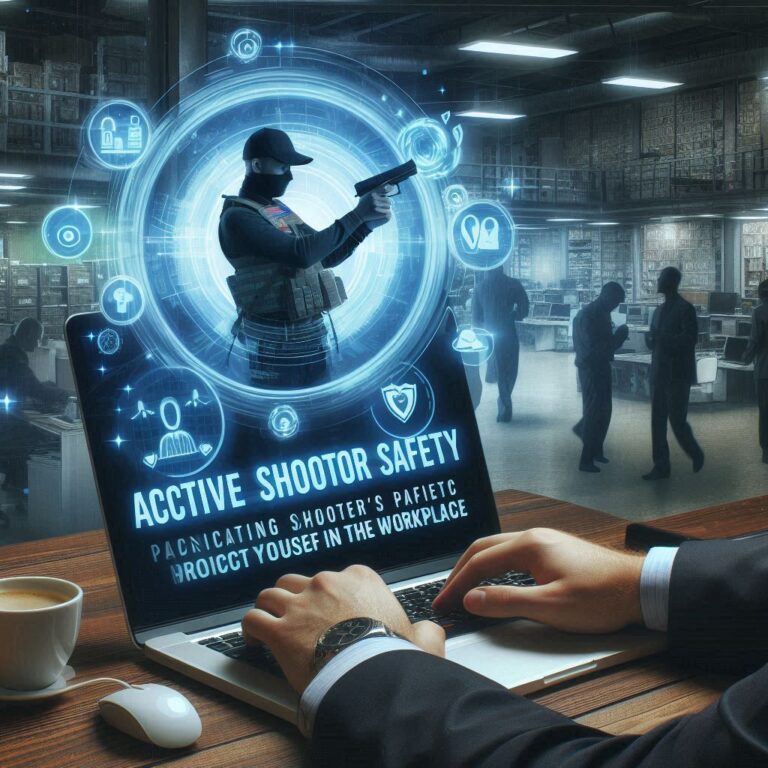In today’s unpredictable world, the possibility of an active shooter situation in the workplace is a frightening reality that organizations must face head-on. At Chuck Harder & Associates, we believe that being prepared is the key to keeping adults and children safe, whether at work, in school, or at home. Our comprehensive training programs focus on empowering individuals with the knowledge and skills they need to respond effectively during these critical moments.
Here are a few essential steps that companies and their employees can take to better prepare for the unthinkable, and ultimately, help save lives in the event of an active shooter situation. Remember, it is better to be proactive and prepared than to be caught off guard and unsure of how to react.
Implementing a Robust Emergency Action Plan
An effective Emergency Action Plan (EAP) is the cornerstone of any workplace’s preparedness for an active shooter situation. It serves as a blueprint for employees to follow during a crisis, outlining the roles, responsibilities, and actions that should be taken to minimize casualties and ensure the safest possible outcome. To create a comprehensive EAP, companies should:
- Establish a planning committee: Assemble a diverse team of individuals from different departments, including representatives from management, human resources, security, and legal, to ensure all perspectives are considered in the planning process.
- Conduct a thorough risk assessment: Identify potential threats and vulnerabilities within your workplace, such as unsecured access points, insufficient communication systems, or inadequate escape routes.
- Develop response protocols: Define clear procedures for employees to follow in case of an active shooter incident, including lockdown, evacuation, and shelter-in-place strategies. These protocols should also address how to communicate with law enforcement and emergency responders.
- Train employees: Regularly educate and train all employees on the EAP, ensuring they understand their roles and responsibilities during an active shooter situation. This should include both classroom-style instruction and practical exercises, such as drills and simulations.
- Review and update the plan: Continually evaluate and update the EAP based on feedback from employees, changes in the workplace, or new best practices in emergency response. This ensures that the plan remains relevant and effective in addressing potential threats.
By implementing a robust EAP, workplaces can not only reduce the likelihood of an active shooter incident but also increase the chances of survival should such an event occur.
Encouraging the Importance of Situational Awareness
One of the most crucial aspects of active shooter preparedness is fostering a culture of situational awareness among employees. By being more cognizant of their surroundings, individuals can more effectively detect potential threats and respond promptly to any emergencies. To encourage situational awareness in the workplace:
- Offer training sessions: Provide employees with training on recognizing and reporting suspicious behaviors or activities, as well as understanding the importance of trusting their instincts.
- Promote the “See Something, Say Something” mentality: Encourage employees to report any concerns or suspicious activities to management or security personnel, without fear of retaliation or embarrassment.
- Regularly communicate reminders: Use various communication channels, such as emails, posters, or safety meetings, to keep the importance of situational awareness at the forefront of employees’ minds.
- Integrate it into daily routines: Encourage employees to practice situational awareness not just at work, but also in their personal lives, as this can help them develop the habit more naturally.
- Establish a supportive environment: Create a workplace culture that values safety and open communication, ensuring that employees feel comfortable discussing their concerns and observations.
By fostering a culture of situational awareness, workplaces can empower their employees to become active participants in their own safety and contribute to a more secure environment for all.
Building Strong Relationships with Local First Responders
Establishing a solid relationship with local law enforcement and first responders is an invaluable asset in preparing for and responding to active shooter situations. By working closely with these professionals, organizations can enhance their safety measures and ensure a more efficient response during emergencies. To build strong connections with local first responders:
- Invite them to your workplace: Host regular meetings or training sessions with law enforcement and emergency responders to familiarize them with your facility, staff, and emergency plans. This can help them respond more effectively in case of an incident.
- Collaborate on safety drills: Include first responders in your active shooter drills and simulations, which can provide valuable insights into improving your response strategies and ensure seamless coordination during a real-life emergency.
- Seek their expertise: Consult with local law enforcement and emergency responders when developing or updating your Emergency Action Plan, as they can offer expert advice based on their experiences and knowledge of best practices.
- Share information: Establish a clear communication channel with first responders, providing them with up-to-date floor plans, contact information, and any other pertinent details that can help them respond more effectively in case of an incident.
- Show appreciation: Recognize the efforts and contributions of first responders by expressing gratitude and hosting events to honor their commitment to keeping your workplace and community safe.
By building strong relationships with local first responders, organizations can ensure a well-coordinated and effective response to active shooter situations, ultimately increasing the likelihood of a positive outcome and minimizing casualties.
Keep in mind that this is only a piece of the puzzle when it comes to safety in the workplace. There are so many other factors and steps for one to consider to ensure the best chances at a positive outcome in a life or death situation. It takes strengthening your situational awareness and preparation, and that’s where Chuck Harder & Associates can help. Contact us today to learn more!




